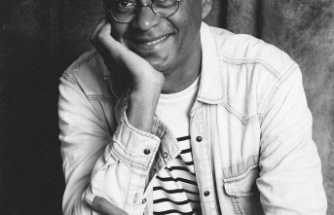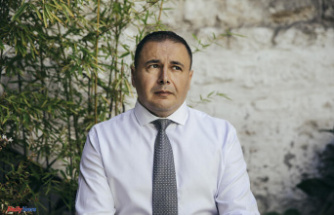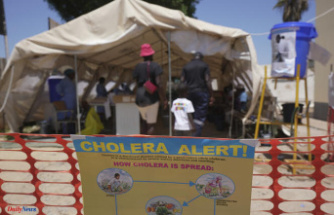You can only produce sour pastries with Danish grapes? Such prejudice! Award-winning wines are produced in rural Zealand - west of Copenhagen. A site visit.
The Danish peninsula of Røsnæs is mostly flat, apart from a few hills. Grain is the predominant crop, and nothing can be seen in the fields other than ears of corn swaying in the wind. From time to time a few horses or sheep. And every few kilometers: vines.
grape vines? In north-west Zealand? Clear. They are called Solaris, Souvignier gris, Rondo. All grapes that thrive in the cool Danish maritime climate and can cope with the rain, which the wind reliably dries once it falls. "We have long hours of sunshine, good soil for the vines and people who dare to grow wine," says Carl Stub Trock. He's one of those who planted grapes.
He sells four different wines in his old stone tower in Kalundborg: a sparkling wine, two whites and a rosé. All with horse names: Sparkling Stallion, Yellow Yearling, Mellow Mare and Pink Pony. Because Stub Trock is also a breeder - but above all he has a long career in companies behind him and also plans the business for other winegrowers.
For Tom Christensen, for example, who owns Dyrehøj Vingaard, Denmark's largest winery. In 2008 Christensen planted the first vines at Kalundborg. He also came from a completely different background: Christensen was a pig farmer. Then he wanted to change. He had already bought the courtyard, which is still the heart of the farm today. "I didn't think twice - I wanted to grow wine and I started with it."
Apparently, Christensen did some things right. His wines regularly win prizes and sell well. In his café in the courtyard there is a fridge from which you can take wine to taste - payment is typically Scandinavian, easy with a credit card, directly on the fridge. Christensen or one of his employees will be happy to guide you through the vines and tell the story of Dyrehøj.
Luca Filannino is the cellar master of the winery. He comes from Puglia in southern Italy. Among other places, Filannino studied in Geisenheim, Germany, and worked in Italy and Australia - countries that produce rather sweet grapes.
"The grapes in Denmark are very different from those in the southern countries," he says. The terroir with the cool climate is reflected in the high acidity of the wines as well as in the grapes that are grown here. They are bred specifically for the cooler, humid climate. "They have a completely different aroma profile than the grapes that we have come to know internationally," says Filannino.
The individual grapes have also not grown as close together as in many well-known varieties. This means that moisture cannot so easily settle in the grapes and cause mildew, which would rot the vines.
The specialist from southern Italy particularly enjoys the fact that he has complete freedom in Denmark. "In classic wine countries, it's often difficult to do something completely new," says Filannino. In Dyrehøj and also at Carl Stub Trock, on the other hand, he can get the best out of the grapes with his own, sometimes unconventional ideas. Sparkling white wines, for example, which are mainly made from Solaris grapes and often taste slightly reminiscent of elderflowers. Heavy red wines will never grow here, says Filannino.
The other winegrowers on Røsnæs are not employers like Tom Christensen. Their lands are not nearly as extensive as Dyrehøj and its surrounding vineyards. But they all have their niche and work together as friends - they only know competition with a nice tone.
Anders Lejbach, for example, tends his rows of vines in the garden behind the house. However, it extends several hundred meters to the Baltic Sea. Røsnæs Vingård is the name of his company, which he inherited from his stepfather. He was the first who had the bold idea of planting vines in Zealand. "He knew that the soil here is not suitable for many things - but for vines." That was in 1995.
Since then, the winery has grown steadily. Frost is rare, thanks to the proximity to the sea. And over the summer, the grapes soak up as much sun and warmth as they can get. "They are usually harvested at the end of October, when they are ripe," says Anders. His whole family then has to pitch in. Because Anders does not do the business full-time - he is still a manager on a fish farm.
Lise Hyttel and her husband live just around the corner and have their fields with 16,000 vines in which their barfod vin is produced. Their niche: biodynamic wines that comply with Demeter guidelines - and that means they have a lot to consider throughout the process from growing the grapes to spontaneous fermentation and bottling.
"But that's a good thing, we don't want to produce any other wine," says Hyttel, who, like her husband, was an architect in Copenhagen for many years and has now started growing wine. Their approach is already being recognized even though they have not been in business long. A number of starred restaurants in the Danish capital Copenhagen on the other end of Zealand serve Hyttels wines: not only because they are ecologically produced and go well with the menu, but of course also because they are appreciated by the guests.
Sofie Saerens has yet to get to that point with her Tusen Vin in Holbæk. Your winery is a Corona project - but one that has been planned for a long time. "During the pandemic, we set ourselves up on our farm and had the vines planted," says the biochemist, who works in a large food laboratory in the capital.
As with many other winegrowers, their vines stand dead straight in the landscape near the Holbækfjord - they were planted according to GPS data. "This can make it easier for us to harvest the grapes mechanically in the future," she explains. Technology is not the enemy of this new generation of winemakers, but is used where it makes work more efficient.
But it will probably be another season before the grapes at Tusen Vin are finally ready and Saerens can start pressing. "My fingers are itching," she says. "Because that's the process I'm particularly looking forward to with my knowledge." In the meantime, she's trying her hand at hard cider, a British style cider. "Several apple producers live in the neighborhood," she says. She got fruit from them - and has already been able to fill her stainless steel tanks.












